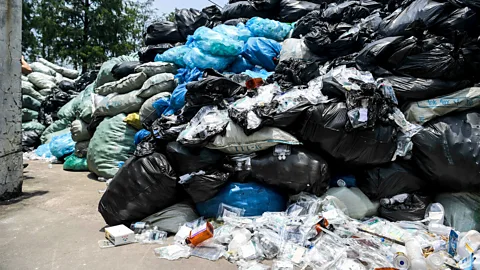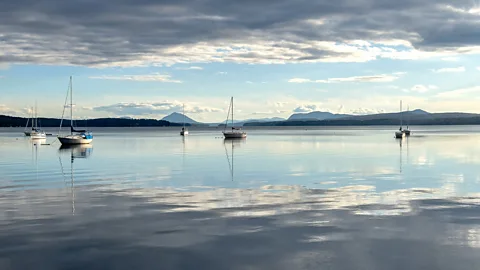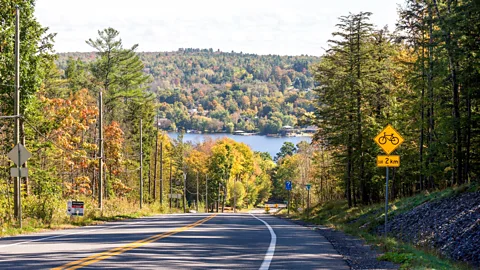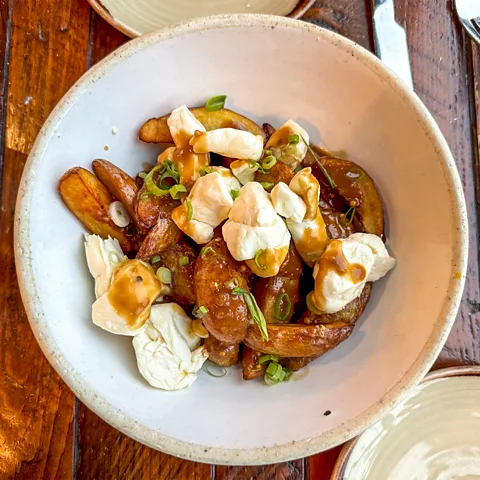Welcome to WordPress. This is your first post. Edit or delete it, then start writing!
Blog
-
Harris started ‘like a rocket’ in Michigan. Now she’s slipping
Marcie Paul is nervous.
A Democratic activist, Ms Paul has been knocking on hundreds of strangers’ doors, making phone calls and sending out flyers, all in an effort to woo people here to vote for Kamala Harris.
When Harris replaced President Joe Biden as the Democratic candidate in July, Ms Paul was hopeful, as she saw the vice-president go “off like a rocket” in Michigan.
The state is one of three “blue wall” states – along with Pennsylvania and Wisconsin – that went Democrat in 2020, and if won again, would help clinch a presidential victory for Harris.
But with less than a month to go before election day, Harris’s honeymoon period in Michigan could be ending, leaving her pathway to victory less certain. A Quinnipiac poll last week indicated Donald Trump is leading in the swing state by three points.
“To keep that pace for the whole race – even though it’s seriously abbreviated – would be really unrealistic for anyone,” said Ms Paul, a resident of West Bloomfield, Michigan and co-founder of the liberal advocacy group Fems for Dems. “But I thought that we’d be a little more comfortable.”
Ms Paul is among several Democratic organisers and lawmakers in Michigan who say the presidential race here is tighter than expected, even as the Harris campaign appears to be heeding lessons from 2016. Critics say then-Democratic presidential
Up north, immigration and economy take centre stage
Although the state is far from the southern border, Democratic organisers keep hearing that immigration is a top concern for Michigan voters.
“I don’t understand why,” said Ms Paul, the Fems for Dems leader. “It’s just really not relevant for us.”
But the issue has resonated with many of the voters the BBC spoke to, including Mary Beierschmitt of Novi, Michigan.
“It’s a big issue,” she said, adding that she thought Harris had not handled the situation well as vice-president, when Harris was tasked with finding solutions to tackle the source of migration.
Illegal border crossing reached a record high last year. After the Biden administration enacted asylum restrictions, they fell to their lowest in four years.
Trump has made attacks on Harris’s immigration record a central part of his campaign. His focus has not just been at the southern border, but in midwestern states as well, including Michigan’s neighbour Ohio, where the former president has falsely claimed Haitian immigrants are settling illegally in the town of Springfield and eating residents’ pets.
Voters tend to blame the party in power for their frustrations with national issues like the economy and immigration, even if the Biden administration isn’t solely responsible for the border crisis and the rising cost of living, said Jonathon Hanson, a lecturer at University of Michigan’s Ford School of Public Policy.
“The downside for Harris and Biden is, although they’ve done a lot of things to help the economy recover from a major downturn, it’s a more difficult story to tell politically,” he said.
Trump also may have the upper hand among some swing voters in Michigan because he is more well known than Harris after four years in office and years in the public eye, said Mr Hanson.
Tim and Janet of Novi, Michigan, say they know Trump’s personality well – and they don’t like it. But the independent voters already cast their ballots for Trump because they believe he is better at articulating his policies than Harris.
“I can’t vote for somebody just because it’s a feel-good time,” said Tim, a 75-year-old who declined to share his last name for privacy reasons. “They need to be doing things and have policy initiatives that are going to be beneficial.”
But in the Detroit suburb of Warren, Harris’s new economic policies are swaying independent voter Darrell Sumpter.
The vice-president has laid out a number of economic proposals during her campaign, including a plan to offer first-time home buyers an average of $25,000, and an expansion of the child tax credit.
“I’ve never been able to even afford a house. I’ve been waiting for years,” said Mr Sumpter, 52, who voted for Trump in 2020 and is leaning toward Harris this year.
“I don’t want the country to regress right back to the same state it was with Trump,” he added.

Darrell Sumpter is excited by the possibilities of Harris’s economic proposals -
The placentas fuelling hospital kitchens in Nepal
The burning of medical waste poses a serious health and environmental danger. Hospitals in Nepal have started turning this hazardous waste into cooking gas.
Hospital staff close to the incinerator complained of persistent coughs, breathing difficulties, headaches, sore eyes and rashes. The black, noxious smoke that poured out of its chimney wafted in through the windows of Tribhuvan University Teaching Hospital (TUTH) in Nepal’s capital Kathmandu. Staff reluctantly closed them to protect their vulnerable patients: children and babies in paediatric and neonatal intensive care, and adults with respiratory illnesses.
“Keeping the windows shut caused the rooms to overheat and added to the discomfort,” recalls Deepak Mahara, former TUTH executive director who has now retired. “When the incinerator was operational, smoke frequently drifted into these sensitive areas, causing significant distress. The foul smell made the work environment uncomfortable.”
Despite this, no one realised their symptoms were connected to the incinerator’s emissions until 2014, when a local non-profit, the Health Environment and Climate Action Foundation (HECAF360), approached hospital managers to suggest replacing the offensive furnace with an underground biodigester. Staff not only faced long-term health conditions if they continued to be exposed to the poisoned air, but the hospital was also causing broader public health and environmental dangers, HECAF360 warned. Low-quality incineration of health care waste releases dioxins and furans into the atmosphere – chemicals both classified as human carcinogens. While medical waste that is dumped outside of hospital grounds poses risks to anyone who may come into contact with it, such as waste pickers on dump sites.
“We were unaware of the negative impact of the mismanagement of healthcare waste,” says Mahara. Realising the issue was serious, he agreed to take action. “It needed to be addressed immediately to comply with hospital’s mission to ‘do no harm’,” he says.
 Alamy
AlamyAbout 5.2 million people die each year from waste-related diseases around the world (Credit: Alamy) The situation at TUTH is common. Hospitals worldwide use incinerators to eradicate rubbish. It is the method most commonly used in developing countries to dispose of infectious waste, according to a UN Human Rights Council report. The report highlights that if medical facilities have small-scale incinerators, or manage them incorrectly, this can lead to dioxins emissions that are 40,000 times higher than emission limits set forth in the Stockholm Convention on Persistent Organic Pollutants.
In Nepal, hospitals and healthcare centres generate between 1 and 1.7kg (2.2 and 3.7lb) of healthcare waste per bed each day, according to Health Care Without Harm (HCWH), a global non-profit working to reduce healthcare services’ negative impacts on the environment and people. One study estimates low-income countries produce up to 6kg (13.3lb) of hazardous waste per bed per day, which rises to 11kg (24.3lb) in high-income nations.
The safe approach to medical waste management is to separate and treat wastes differently. According to the World Health Organization (WHO), 15% of healthcare waste is hazardous material that may be infectious, toxic or radioactive. Waste must all be segregated before disposal, but just one-third of healthcare facilities do this. This has a detrimental impact on people and the planet. About 5.2 million people, including four million children, die each year from waste-related diseases around the world.
-
Pre-eclampsia: The deadly mystery scientists can’t solve
The condition causes more than 70,000 maternal deaths every year – but its causes continue to elude scientists.
After a glittering track and field career which saw her rack up seven Olympic gold medals and 14 world championship golds, Allyson Felix assumed that pregnancy would be as smooth as her trademark running style.
“All my life, I’ve taken care of my body, my body has been my tool, and it has never really failed me,” says Felix. “I’ve trained and I’ve put demands on my body, and it’s always performed. [So] I was thinking [of having] like a beautiful natural birth, I’d gone to hypnobirthing, and all these things,” she says.
But when Felix attended a routine check-up at 32 weeks, she was shocked to be told that she had severe pre-eclampsia, a pregnancy complication that causes dangerously high blood pressure levels and organ damage, and that she required immediate hospitalisation. The following day, doctors performed an emergency C-section, and her daughter Camryn was born two months early, subsequently spending the first month of her life in the neonatal intensive care unit.
Until then, there had been few signs that anything was amiss for Felix and her unborn baby, other than some swelling in her feet. “I wasn’t too alarmed by that, but I found out I was spilling protein and all these things about my blood pressure. It was terrifying. But our family got to go home,” she says.
While Camryn is now a healthy five year old, Felix is all too keenly aware of similar stories which have resulted in a far more tragic ending. In April 2023, her long-time team-mate Tori Bowie, a former world 100m champion and relay gold medallist at the Rio 2016 Olympics, died in childbirth from complications linked to pre-eclampsia. She was just 32.
“We were on numerous relay teams together, we competed against each other, with each other, and that was extremely shocking,” says Felix. “Someone that I’ve spent so much time with, it was really devastating.”
Unravelling a deadly enigma
Worldwide, pre-eclampsia is thought to be responsible for more than 70,000 maternal deaths and 500,000 foetal deaths every year, with many fatalities resulting from stroke or prolonged fitting as a result of the elevated blood pressure. It can occur without warning at any time during pregnancy, with some women developing early-onset pre-eclampsia before 34 weeks, and others experiencing late-onset forms of the condition. Women can even suffer from postpartum pre-eclampsia in the six weeks after giving birth.
 Getty Images
Getty ImagesRates of pre-eclampsia are up to 60% higher in black women – though no one knows why (Credit: Getty Images) Scientists have uncovered a few clues as to why this happens. Excessive inflammation, beginning in the uterus, disrupts the delicate communication patterns taking place between the mother’s body and the foetus. In particular, it impacts the reshaping of blood vessels within the uterus to form the placenta, the organ created to provide the foetus with the nutrients and oxygen it needs.
Because the flow of blood through the placenta is abnormal, it ultimately interferes with how the mother’s body controls blood pressure, gradually leading to hypertension and ultimately pre-eclampsia.
“When a woman becomes pregnant, her heart’s got to pump extra for the baby and the placenta,” says Ian Wilkinson, clinical pharmacologist and professor of therapeutics at the University of Cambridge, who is leading a UK-based population study of pre-eclampsia called Poppy. “The amount of blood she’s pumping each minute goes up one-and-a-half to two times [in normal pregnancy].”
Women with existing autoimmune disorders, those aged over 40 and women with a larger body mass index are known to be at greater risk, perhaps because they are unable to adapt as well to the physical toll that pregnancy places on a woman’s body.
But there are still many mysteries about why certain women develop pre-eclampsia, often without warning, and why others do not. In particular, rates are as much as 60% higher in black women, who are also more likely to experience severe forms of the condition.
Some researchers believe that the latter could be linked to poorer access to good nutrition and health insurance. “There’s structural racism, where certain patients and communities don’t have the same access to early interventions, detection screening, primarily because of where they get their healthcare,” says Garima Sharma, director of cardio-obstetrics and cardiovascular women’s health at the healthcare company Inova Health System in Fairfax, Virginia.
At the same time, Sharma says that this does not explain exactly why the condition begins in the first place. While doctors still rely heavily on clinical risk factors such as age, ethnicity and medical history to assess who might develop pre-eclampsia, the accuracy of predictions based on these factors is notoriously poor. “The sensitivity of clinical risk factors on their own is low,” says Sharma.
But with newer and improved diagnostics beginning to emerge, scientists may soon be able to shed more light on who is at risk and why.
Predicting pre-eclampsia
While specialists treating other diseases such as cancer or chronic infections can often take a biopsy of a patient’s internal tissues for further analysis, there is no easy way of studying the changes taking place in a pregnant woman’s uterus.
“We can’t just routinely go in and collect a sample of placenta [from a pregnant woman], because that can really increase the risk of miscarriage,” says Lana McClements, associate professor at the University of Technology Sydney. “And animals actually don’t develop pre-eclampsia, so rodent models, for example, are very difficult to create.”
-
The Véloroute Gourmande: Canada’s delectable 235km food trail
Launched in 2022, the new path threads Québec’s bucolic villages and lake-laced landscapes, passing more than 100 culinary stops from Montréal to Sherbrooke.
Once, in 2019 – uncomfortably perched on a borrowed, oversized bike – I rode 42km on a windswept, gravel causeway built atop an old train line that cuts through the waters of New England’s Lake Champlain.
Based on that experience, and a leisurely 32km pedal near my Vermont home recently, I decided to hop on a Greyhound bus to Montréal with my sister, a more experienced biker, and spend five days tackling the Véloroute Gourmande: a 235km paved and gravel cycling trail connecting Montréal and the city of Sherbrooke in southern Québec.
That’s how I found myself sopping wet from unrelenting rain, wearing padded bike shorts beneath running tights, multiple shirts under a rain jacket and dripping onto the wooden floorboards of one of the most charming coffee shops I’ve ever entered, Yamaska Café in Farnham, Québec. I’m not yet an intermediate rider, but I’m certainly a stubborn beginner. And a hungry one.
Luckily, I was – quite literally – on the right track. Launched in April 2022, the Véloroute Gourmande passes more than 100 culinary stops, from farmers’ markets and vineyards to casual pubs and elegant farm-to-table restaurants, as it threads through the region’s bucolic villages and lake-laced landscape. As a food writer, goose farmer, cooking teacher and restaurant chef, I was keen to turn my attention from the woods where I forage for wild mushrooms and my garden, which abounds with heirloom tomatoes, uncommon herbs and edible flowers, north to explore the culinary heritage of the Québecois countryside.
 Suzanne Podhaizer
Suzanne PodhaizerThe trail passes through the Eastern Townships’ many lakes (Credit: Suzanne Podhaizer) Much of the trail follows a portion of the Route Verte, whose 5,300km crisscross Québec and comprise the longest network of cycling paths in North America. But aside from its length, the main difference between the two routes is that the Véloroute Gourmande was essentially designed as a slow travel food tour. While pedalling across Québec’s countryside, cyclists can stop to refuel on gravy-slicked French fries, tarts filled with blueberry jam, coffee gussied up with maple syrup or booze flavoured with boreal herbs, forest mushrooms or wildflowers.
The Véloroute’s interactive map features 120 icons – including tiny forks, beer glasses and squat jam jars – that denote places to stop for things like golden panini stuffed with house-cured ham and bloomy rind cheese, dark ale delicately scented with spruce tips or wedges of cheese to squash into one’s panniers and nosh by the side of the road.
Despite its name, this “Gourmande” trail isn’t merely culinary. Organisers also offer suggestions on elegant hotels and charming B&Bs, culturally important sites – such as a Le Vieux Clocher concert hall in Magog and a defunct copper mine that offers underground tours – and every bike shop along the way, in case your derailleur gets derailed on the rail trail.
Although it’s possible to tackle the route in either direction, the Véloroute website suggests starting in Montréal and riding east. Given that Montréal is the most likely arrival point for out-of-towners and the biking closest to the city is easiest (read: flatter), allowing cyclists to build up to the longer, hillier days, this makes good sense. Riding east also provides a better chance at a tailwind, although it does increase the climbing by 150m.
 Suzanne Podhaizer
Suzanne PodhaizerThe route extends 235km east from Montréal (Credit: Suzanne Podhaizer) The initial segment, a 45km pedal from Montréal to the city of Saint-Jean-sur-Richelieu, contains 55 of the route’s 120 culinary pit stops. In order to pack in more dining, we gave ourselves an extra day to cover the first leg.
As a chef, I’ve typically planned my travels around culinary explorations. Over time, I’ve developed strategies for sniffing out the finest fare, from comforting and casual to exquisite. However, I’ve never before been limited to the places I could get to with only pedal power.
I narrowed down the options in two ways. First, I eliminated places that would be closed when I passed by, including farmers’ markets that are open for just four hours per week. Next, I looked for stops that highlight the best of what Québec has to offer, ignoring otherwise appealing ramen shops and Italian restaurants. The region’s modern cuisine leans heavily on its French-occupied history – think buttery pastries, French onion soup and crêpes rolled around sweet or savoury fillings. These items are complemented by fare that might be fit to take along while logging or fur trapping, such as long-lasting hard cheeses and charcuterie, and spiced meat hand pies.
As a rule, restaurants with massive menus often rely on frozen and premade goods, so I nixed those, even if they tantalised with mentions of Québecois fare such as poutine, steak or salmon tartare or custard-y maple syrup pie. Briefer menus that mentioned the use of local or seasonal ingredients, and featured those same classic items, made the list.
 Suzanne Podhaizer
Suzanne PodhaizerThe trail allows cyclists to sample Québec’s unique flavours, like dressed up poutine (Credit: Suzanne Podhaizer) Once I had my itinerary, we set out. Biking east, we travelled along the mighty St Lawrence River, passing decaying factories, building-sized cruise ships and the two islands that make up Parc Jean-Drapeau, which features a ferris wheel, a geodesic dome that looks like a massive soap bubble and Montréal’s slick Formula 1 racing circuit.